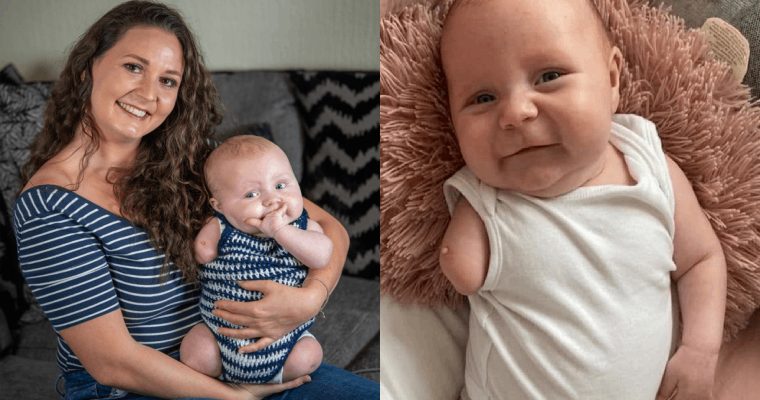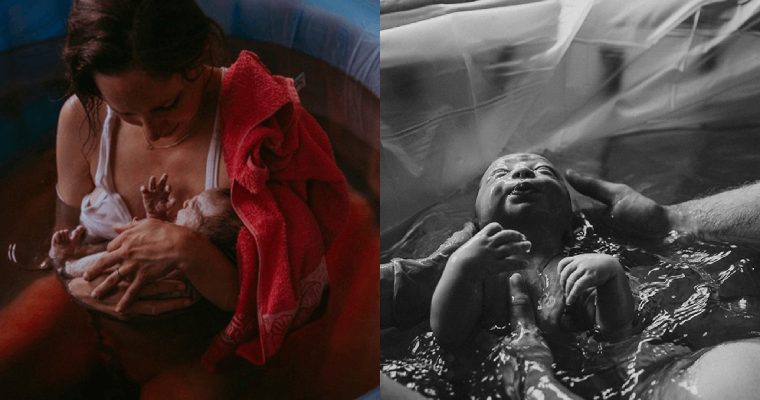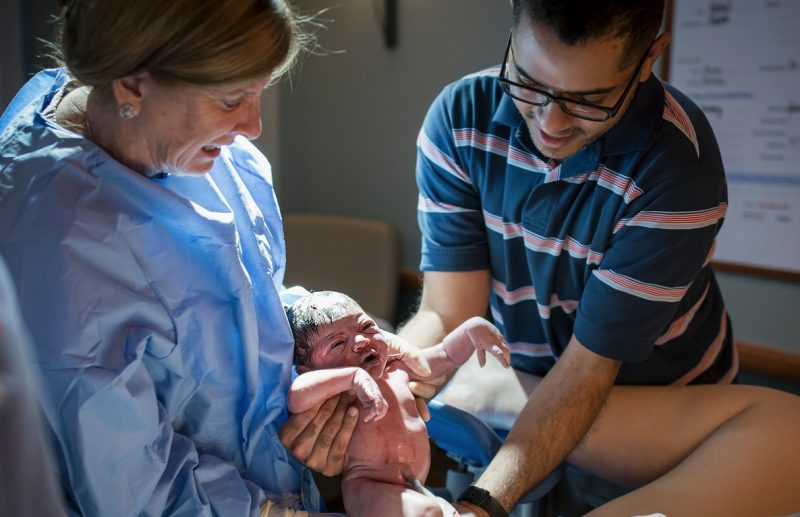“I was 26 weeks pregnant when I first heard, ‘Your baby girl isn’t growing properly.’
As I sat anxiously waiting in the Maternal Fetal Medicine office, alone and terrified, my mind went everywhere. Up until this ultrasound, everything looked great. Perfect. It was a difficult pregnancy from the start, but through it all our baby seemed healthy. I had many appointments and lots of scans since I was considered to be an older mom with high blood pressure. We were monitored closely.
The doctor came out and sat down right beside me. She explained the long bones in Nora’s arms and legs were measuring behind. This was a red flag for skeletal dysplasia. Without much explanation, she headed back to her office to look over the measurements in detail, leaving me to text my husband and delve into Google. Without enough info, full of fear and armed with nothing but shock and anxiety, I stumbled upon scary statistics, a lack of information and words that seemed jumbled on the page. What did this mean for us? Was everything going to be okay? What was wrong?
Finally, the doctor came back, rattled off some numbers and explained it was possible our baby would be born with a type of dwarfism. She said most likely achondroplasia, but there was no way to tell for sure without more tests. I declined the testing over and over. I was already high risk and they said results probably would not come back until very close to our C-section date anyway. We did go ahead and have an MRI to get a closer look and better measurements. We ended up back in the same place: ‘most likely,’ ‘we can’t know for sure.’ ‘Are you certain you don’t want to do the test?’ ‘We will just have to wait and see.’
So we waited. We monitored. We watched. We panicked. We researched. We worried. We stressed for 11 more weeks. It felt like her birthday would never come. Then, at 37 weeks, my body couldn’t take anymore. It was time. All along, Nora seemed healthy, just small. The one thing specialists were concerned with was breathing once delivered. Her chest was small. We had changed our birth plan to include a bigger team of specialists and a hospital with a NICU just in case there was trauma or issues once she arrived.
That day, after a lot of waiting, rising blood pressure, tons of fluid and sheer exhaustion, Nora entered this world with a cry. That cry meant everything. She could breathe. We could breathe. It was okay. The doctor yelled out (while I was barely cognizant due to meds and fatigue), ‘It’s what we thought!’ I couldn’t hold her at first. She was whisked away quickly for a closer look and to monitor some blood sugar issues. Other than this, she was okay. She was here and she was fine.
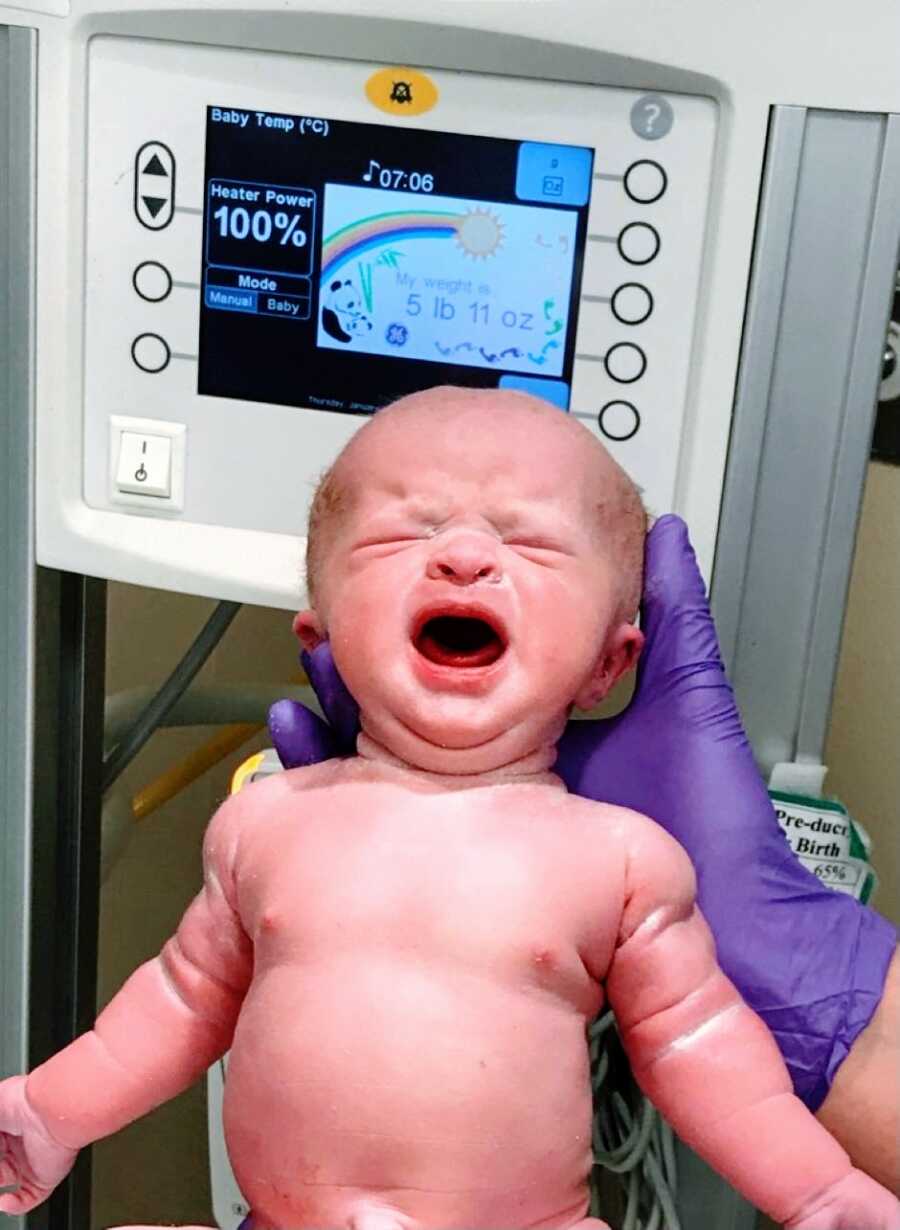 Courtesy of Emily Young
Courtesy of Emily Young
Although it couldn’t be confirmed, Nora had many of the features of achondroplasia. The first few days of her life were hard. I was recovering, missing my boys, and feeling overwhelmed. This wasn’t my first trip to motherhood, but this journey was different. Many specialists came in and out. There were tests, exams, poking and prodding. Questions and information overload. I just wanted to head home and start on our new path. Together. I was scared and worried, but I was ready.
I couldn’t wait to go home. I couldn’t wait to figure out this new family of four thing. I was not a brand new mom, but it had been 6 years since we had a newborn. I was not a brand new mom, but I was a brand new mom to a beautiful baby girl who happened to have dwarfism. This changed the game a bit. There were new rules.
Those who know me well, understand my first baby was my everything. He was my first little love bug. He was the best thing I ever did with my life. He was the culmination of some really hard emotional work. Nate was my heart. Now, I shared my heart. It felt like it may explode. I had no idea I could love him anymore until I saw him with his baby sister, who he quickly nicknamed ‘sissy.’ Their bond was immediate. Nora did and still does look at her big brother as if he’s made of stars, shining bright and full of light.
 Courtesy of Emily Young
Courtesy of Emily Young
With all this love came a ton of worry. Even though we were somewhat prepared, we didn’t have all the answers yet. We didn’t tell my son about his sister’s diagnosis until a few days after Nora was born, and even then he didn’t recognize any differences. My favorite 6.5-year-old on earth only saw tiny piggies and little fingers, squishy cheeks and the cutest lips. He saw Nora. Perfection. Love. Joy. When I told him Nora had dwarfism and would be a little person, he assumed I meant she would stay a baby forever. It was pretty cute. Because it’s so rare, we’ve only met one other little person before Nora completed our family. We had many conversations about this, and although it was confusing for him and he had lots of questions, he loved his baby ‘sissy’ tons right from the start.
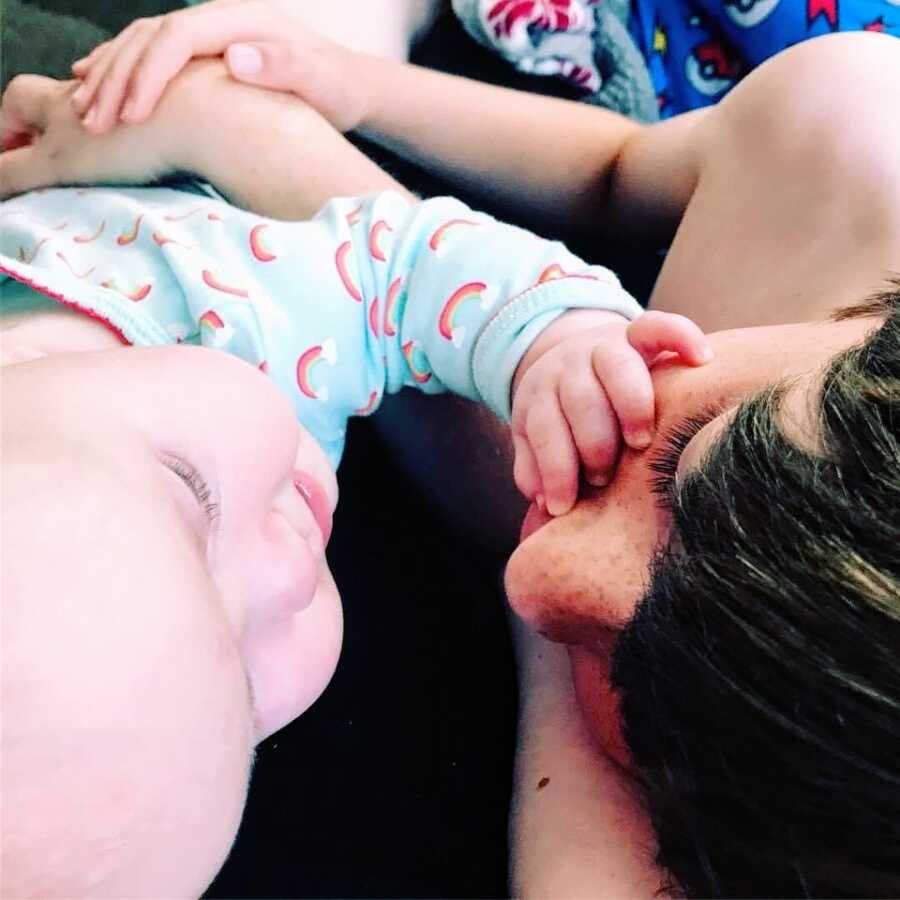 Courtesy of Emily Young
Courtesy of Emily Young
There was so much love, but it was quite an adjustment for us all. Not only did we have to get used to the newborn schedule again, but Nora had so many appointments immediately after being born. There was so much information being thrown at us with barely any time to process it all. It was exhausting.
We quickly began learning about our new little love. Since we were unable to have the genetic testing done right away, the geneticist let us know Nora’s features, X-rays and skeletal make-up pointed towards two possible types of skeletal dysplasia. It took 5 months to get confirmation of Nora’s diagnosis through genetic testing. It was as suspected. Something about knowing for sure put our minds at ease. It helped to know we had started out on the right path and we were headed in a direction to help her the best we could.
From this day on, the appointments and procedures started adding up – orthopedics, neurosurgery, ear nose and throat, genetics, sleep studies, X-rays, MRIs, measurements, check ups, car seat tests, and so much more. To say it was overwhelming is an understatement. Specialists continuously informed us Nora would have a lifetime of challenges. Of course, my mind immediately raced to her future. I had so many questions.
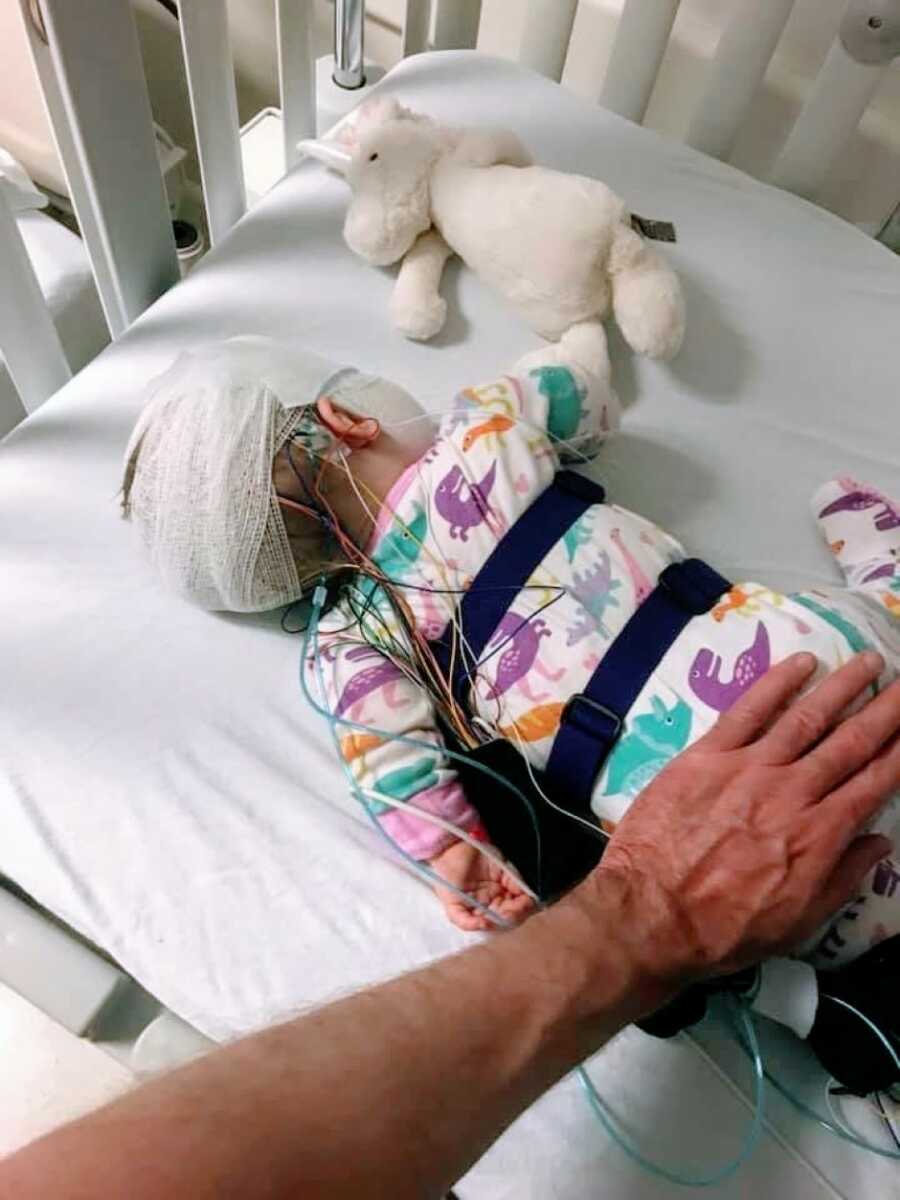 Courtesy of Emily Young
Courtesy of Emily Young
We were told the first two years would be the hardest. Babies with achondroplasia may meet physical developmental milestones later than their average height peers. Sitting up, crawling and walking would most likely be delayed, partly due to shorter limbs and a larger head and partly due to Nora being born with severe hypotonia or ‘floppy infant syndrome.’ All newborns are floppy but Nora had very little muscle tone and strength.
However, at two months, there was already much improvement, but we still needed to be very cautious. Since her head is proportionately larger than her body and she has poor muscle tone, her neck and back cannot support it well. When you hear it’s possible for your baby to dislocate her neck or compress her spinal cord, it’s hard not to be anxious. Babies, kids and adults with achondroplasia can also have many spine issues, so as newborns it’s important to spend a lot of time on their back on flat surfaces. As strength is gained, tummy time is important too in order to continue to build muscle. Nora wasn’t approved to use swings, rockers, baby slings/carriers and certain infant carrier seats yet. So, we were left with snuggling and playing on the floor mostly. She loved both, thankfully.
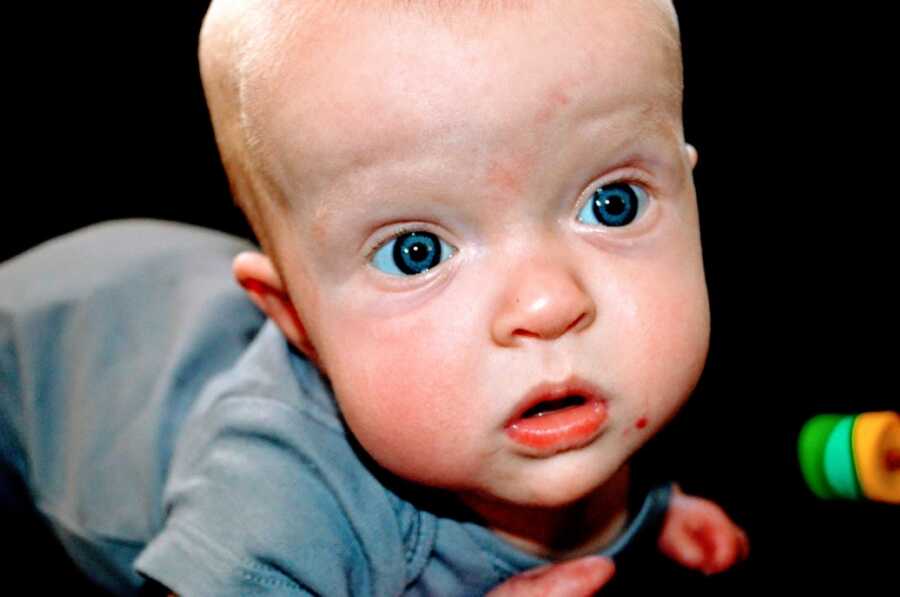 Courtesy of Emily Young
Courtesy of Emily Young
There’s a one in 15,000 to one in 40,000 chance a baby will be born with achondroplasia. It’s rare. There are hundreds of types of skeletal dysplasia. Babies with achondroplasia can develop bowed legs and curved spines, have smaller mouths and nasal passages, crowded teeth, obstructed airways, hydrocephalus, sleep apnea, shorter fingers, smaller hands and feet, midface hypoplasia and lordosis. They are prone to ear infections which can lead to early hearing loss, they are at higher risk for SIDS, and can suffer from spinal compression. Some babies have surgery at a few months old to a year to enlarge the hole (foramen magnum) that surrounds the spinal cord to ease the compression. Otherwise compression can lead to loss of movement, pain, numbness, or death. Babies and toddlers with achondroplasia often need to have tonsils and adenoids removed as well.
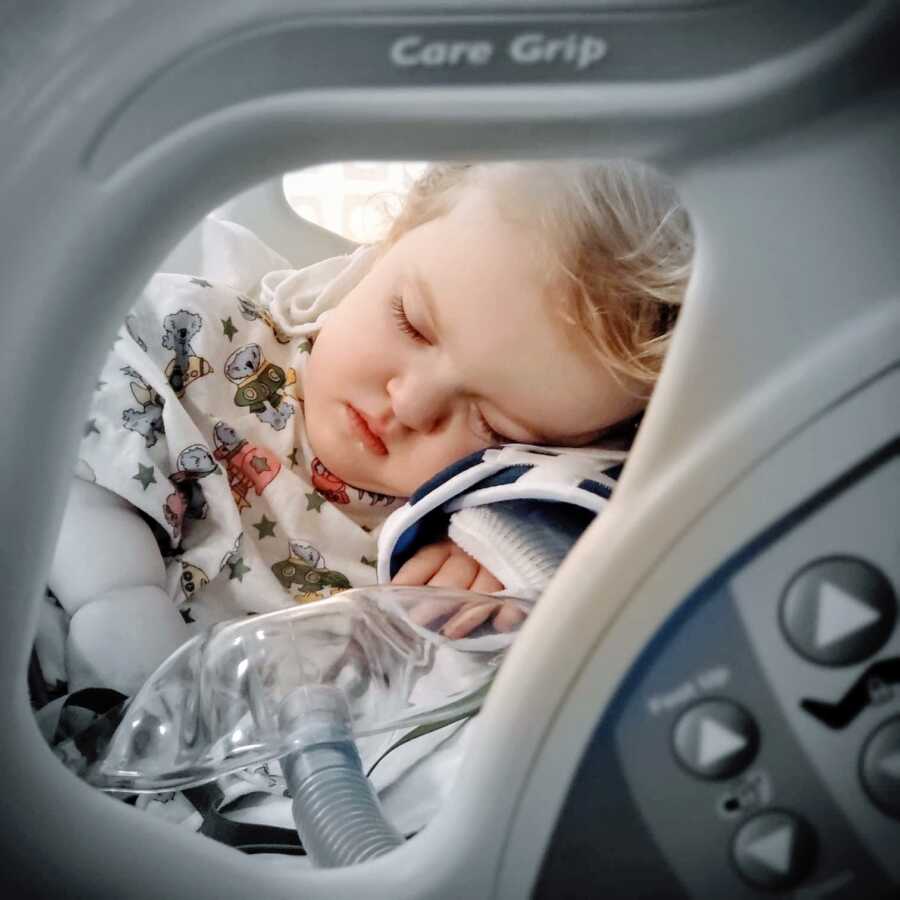 Courtesy of Emily Young
Courtesy of Emily Young
If you’re like me, you probably assumed the major challenge related to being a little person meant being small in a world built for average height humans. This is a huge challenge, but there is so much more to it. Not only are there some or all of the concerns stated above, there’s also the emotional issues which can arise as a newborn becomes a toddler, then a child, then a teenager and an adult. It’s not going to be easy and I’d be lying if I said I don’t think of all the things my daughter will face when I look at her, but I also see strength, love, smiles, and someone truly special. My little love shows us everyday she’s a fighter. My daughter doesn’t need changing. This world does. Accessibility and inclusion are huge issues in our world today. People with dwarfism continue to be a community which is mocked, bullied, laughed and pointed at, and harassed. My daughter, her peers and all little people deserve to feel safe, respected and comfortable in their daily lives.
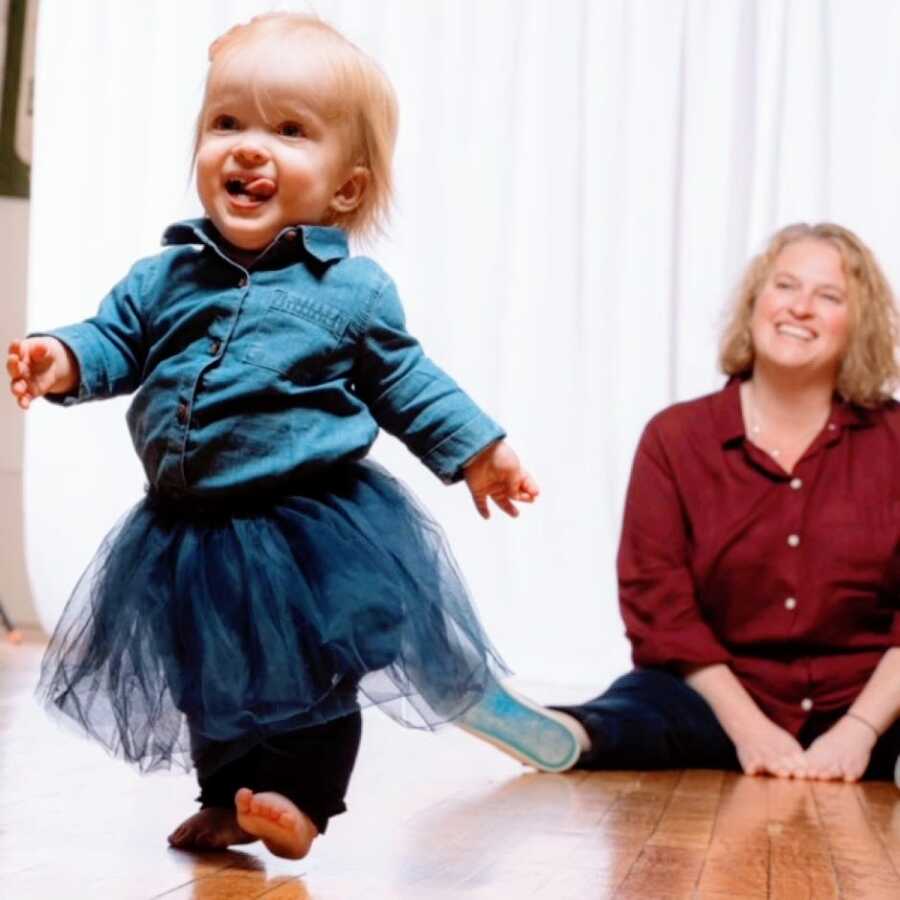 Courtesy of Emily Young
Courtesy of Emily Young
We are now over 4 years into this journey and there are periods of a slower pace. Moments to take a breath. There is a level of comfort and knowledge I didn’t have in the beginning. Sometimes, it feels we were robbed of the newborn stage. It was a place so full of unknowns, anxiety, fear and worry. There was a flood of information making it almost impossible to process our new lives. It often felt like we were on a desert island, isolated and alone. Then, I stumbled across an amazing and supportive community of parents who were in my shoes. They had similar thoughts, feelings, fears, excitement, confusion, and joy! It changed everything. I am forever thankful to all the POLP (parents of little people) I have met. They are like a beacon of light, shining on the path of unknowns. It makes a world of difference to know you’re not alone. And now, I can share my experiences with newer parents, hopefully helping to ease some worry and highlight the joy.
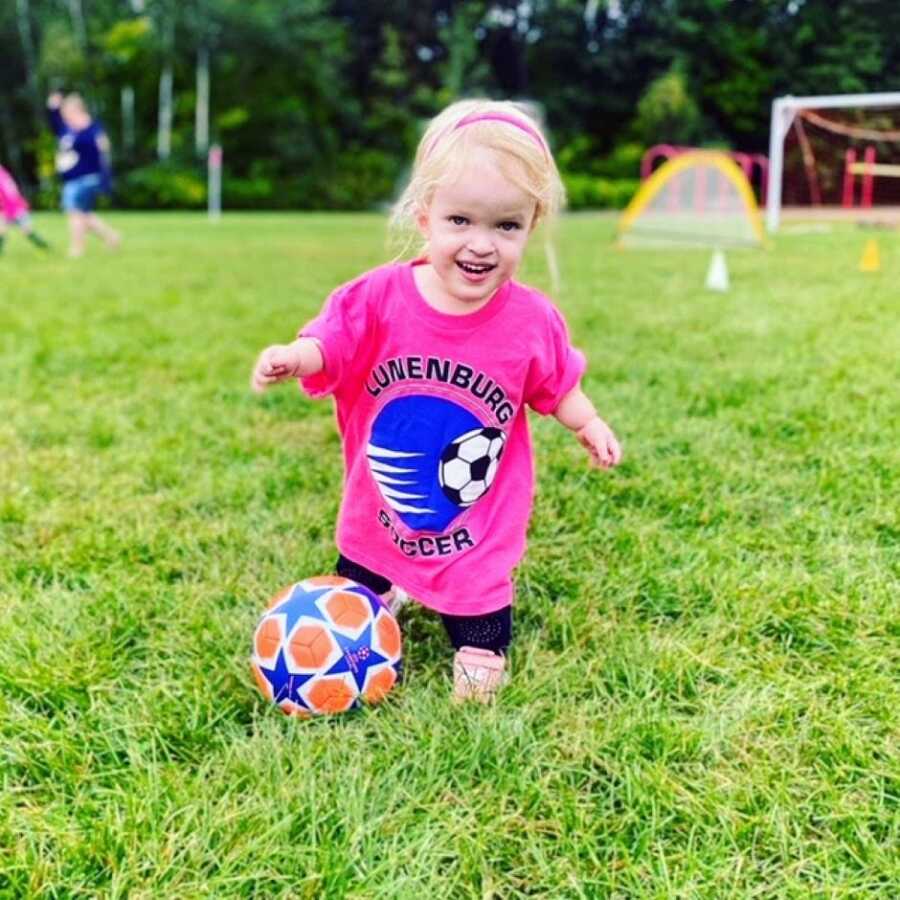 Courtesy of Emily Young
Courtesy of Emily Young
Nora is an amazing 4 year old now. She’s learning and growing, loving and blooming. I’m so grateful to have a front row seat to her journey. Watching her love and joy for life is the sunshine we never realized we needed. Together, we can get through anything.
 Courtesy of Emily Young
Courtesy of Emily Young 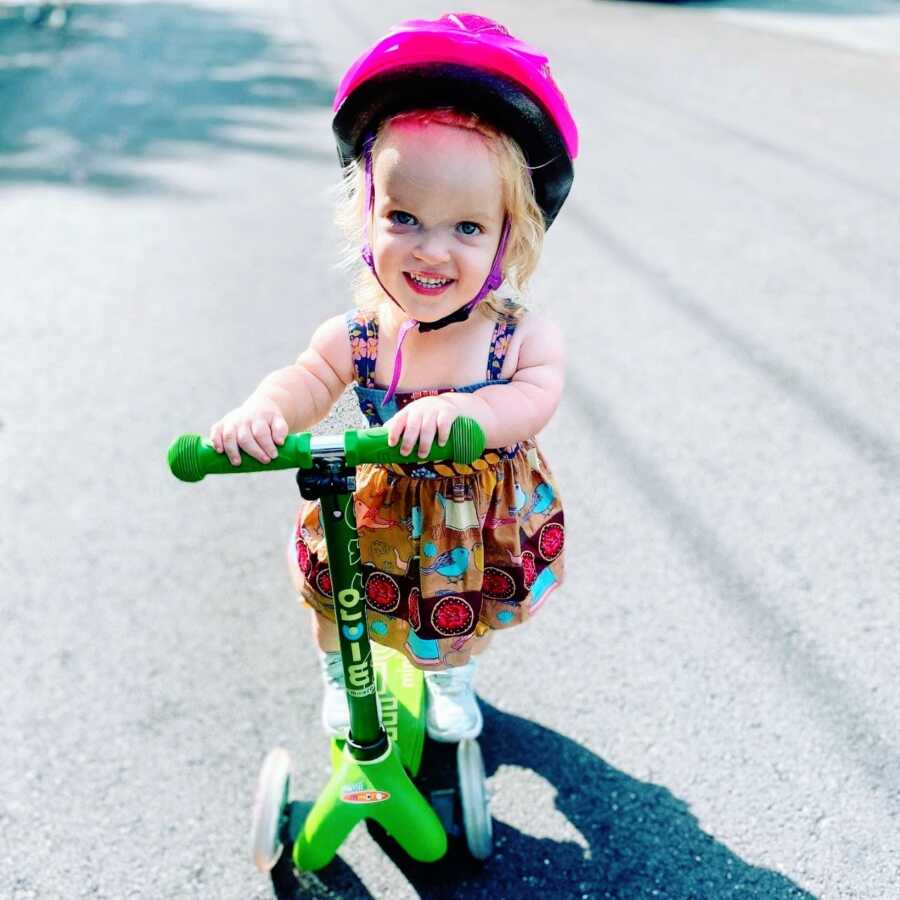 Courtesy of Emily Young
Courtesy of Emily Young
If there’s one thing I’d like you to take away from our story, it’s kindness. Celebrate differences, embrace disability and never underestimate a person based on your perceived ideas of his or her challenges. Stand up and speak up. Fight for inclusion. Encourage empathy. This can only make the world better for everyone!”
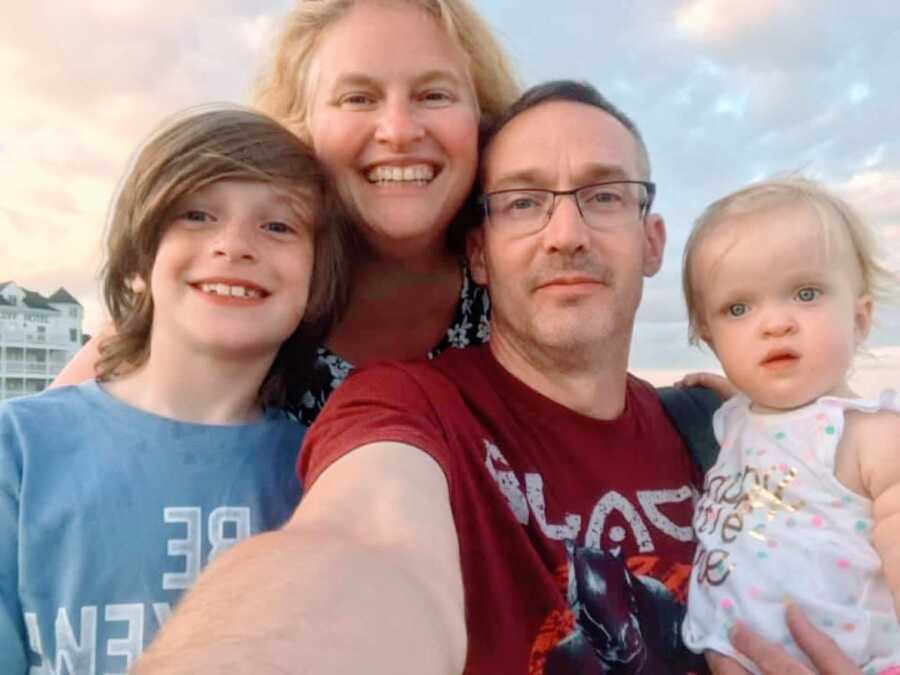 Courtesy of Emily Young
Courtesy of Emily Young 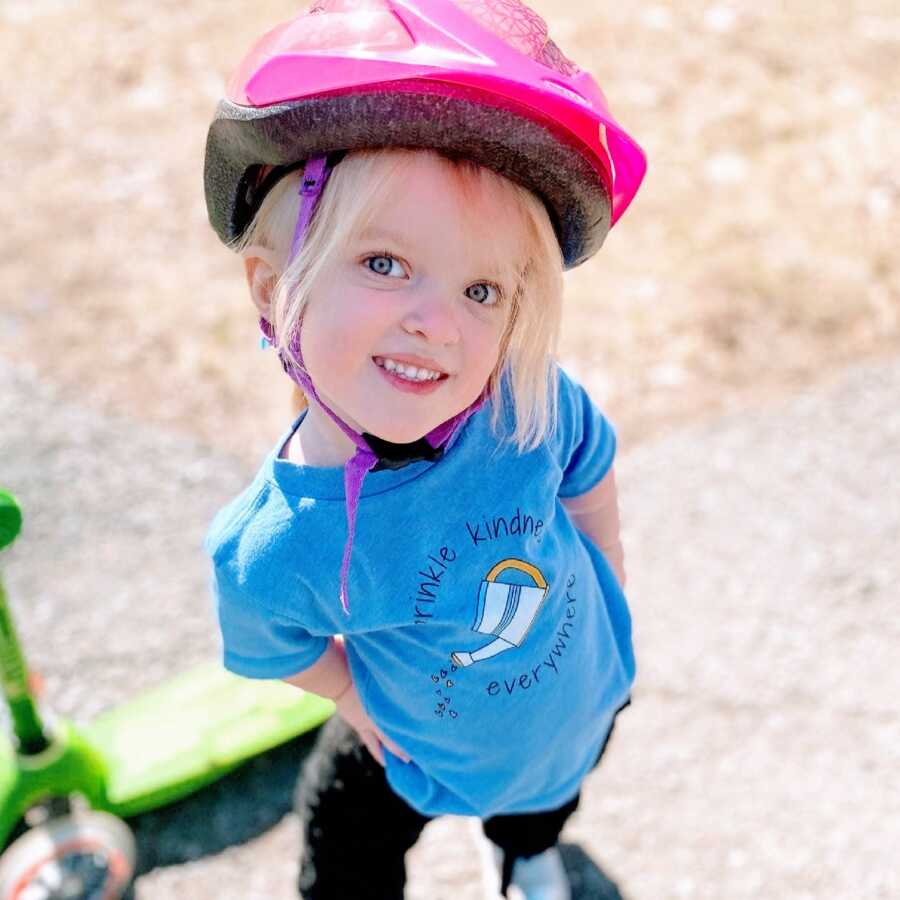 Courtesy of Emily Young
Courtesy of Emily Young
This story was submitted to Love What Matters by Emily Young. You can follow her journey on Instagram and her blog. Submit your own story here, and be sure to subscribe to our free email newsletter for our best stories, and YouTube for our best videos.
Read more stories like this here:
‘It was a war just to keep my newborn ALIVE.’: Medical mom praises daughter born with Severe Combined Immunodeficiency, dwarfism
‘We got THE CALL. Without a second thought, I said, ‘Yes! A thousand times yes!’ I knew she was meant to be ours.’: Mom of 5 adopts baby with rare case of dwarfism, ‘She has no limits’
‘You were born for our entertainment.’ An avalanche of mean comments poured in. It was crushing.’: Woman with dwarfism ‘determined’ to spread awareness
‘I’m 5’7″ and my husband is 6’3″. How could this be?’ We had no family history.’: Mom celebrates daughter with Dwarfism, ‘It’s part of what makes her perfect’
Provide beauty and strength for others. SHARE this story on Facebook with family and friends.
262 Shares Tweet Email Achondroplasia Dwarfism, be kind, Hypotonia, inclusivity, Skeletal Dysplasia, special needs mom ‘If a mama’s house is messy, she picks up constantly. If her child misbehaves, she’s exhausted every resource to help. If she says ‘no,’ her plate is full.’: Tired mom urges ‘assume the best of a mama, she needs your support’I Am 37 Years Old, And I Have No Freaking Clue What I Want To Do With My Life
Source: lovewhatmatters.com


